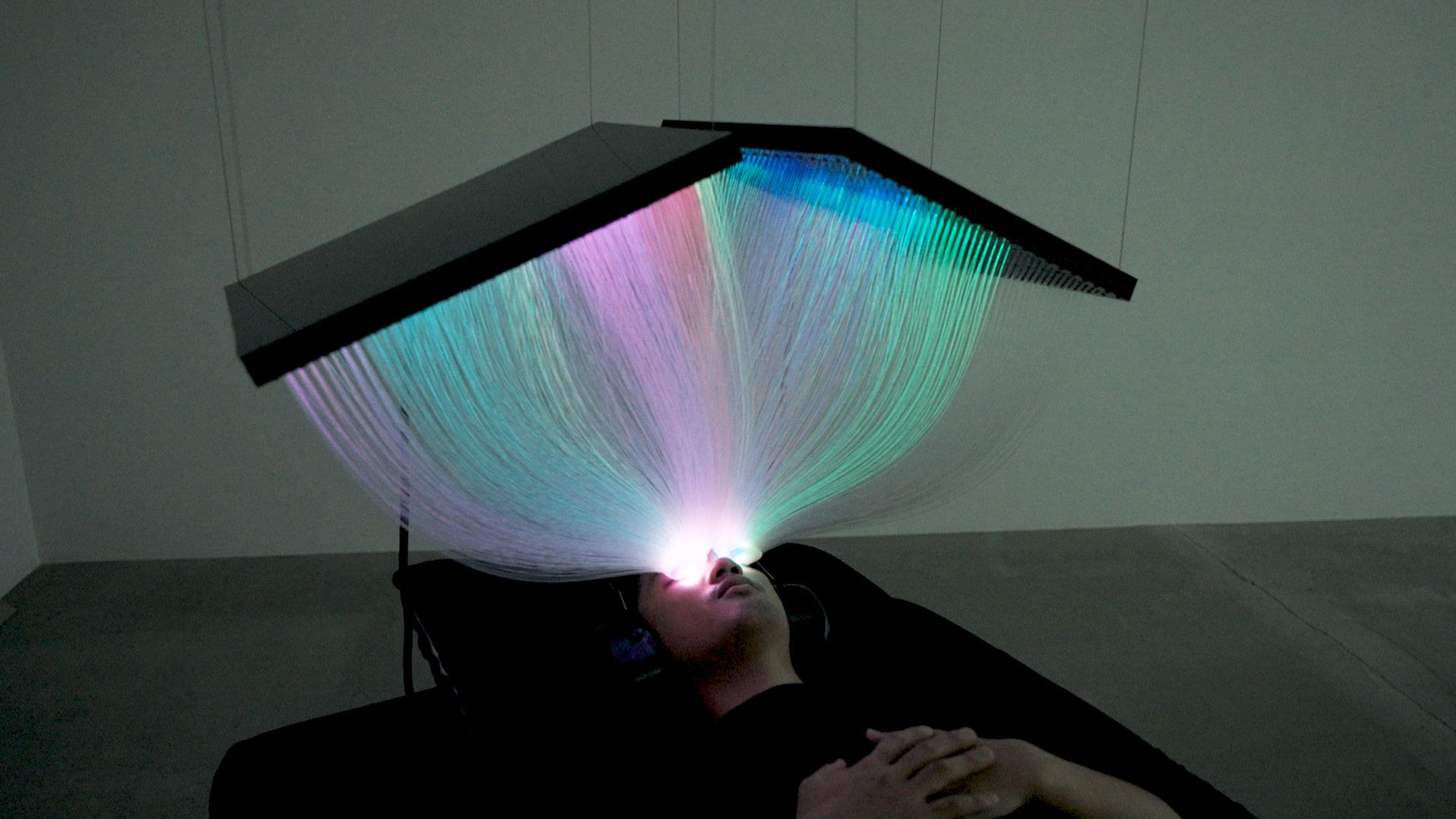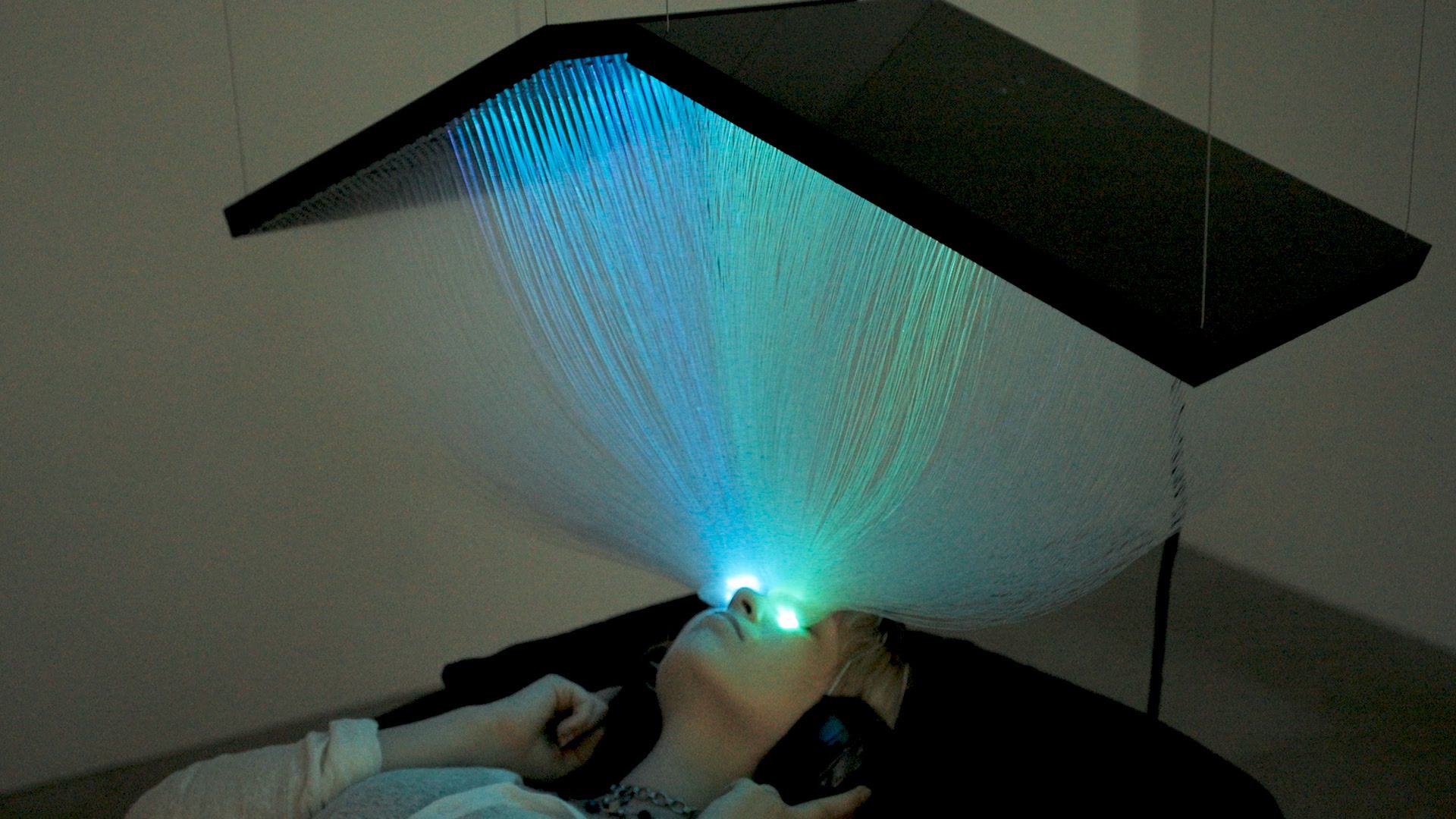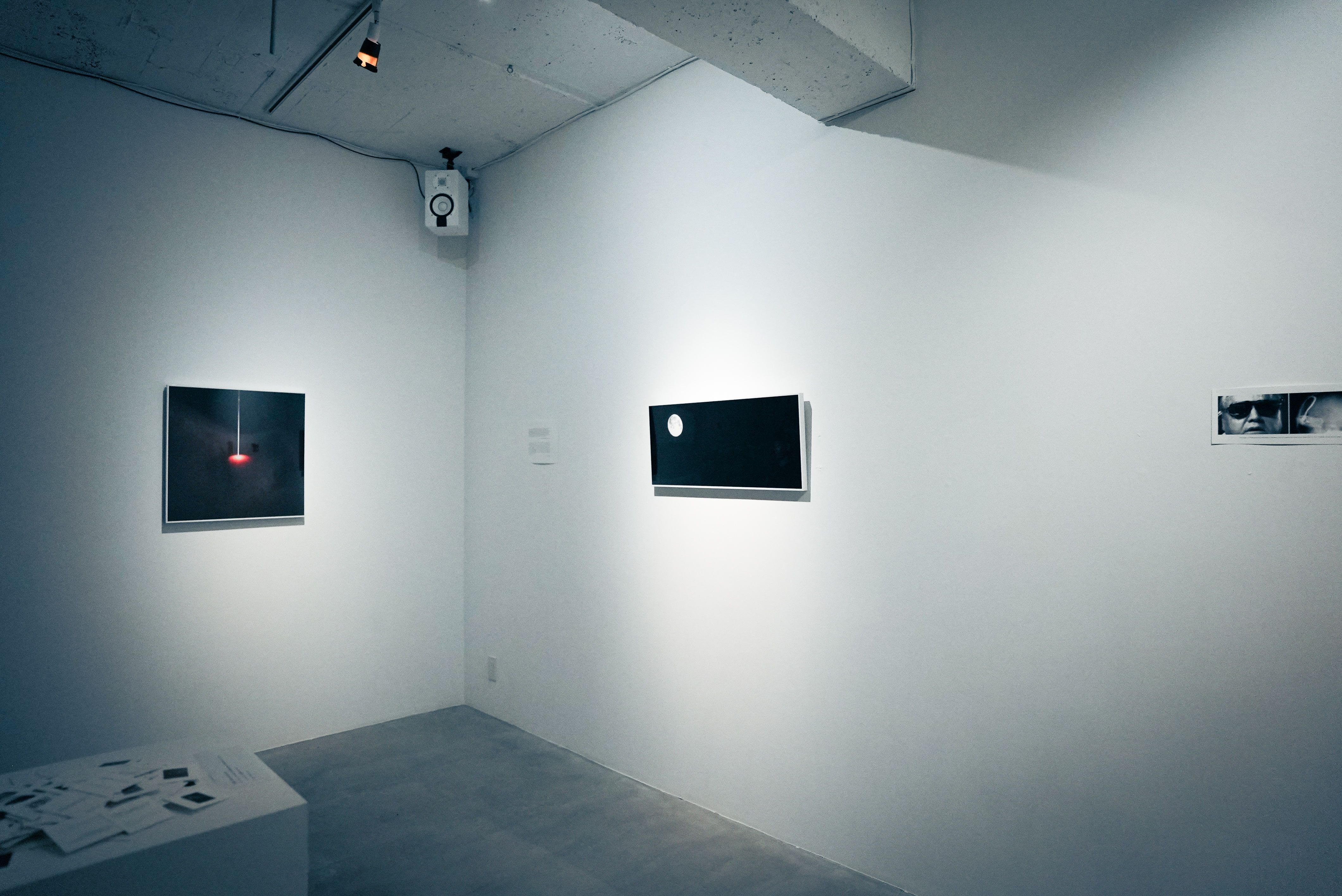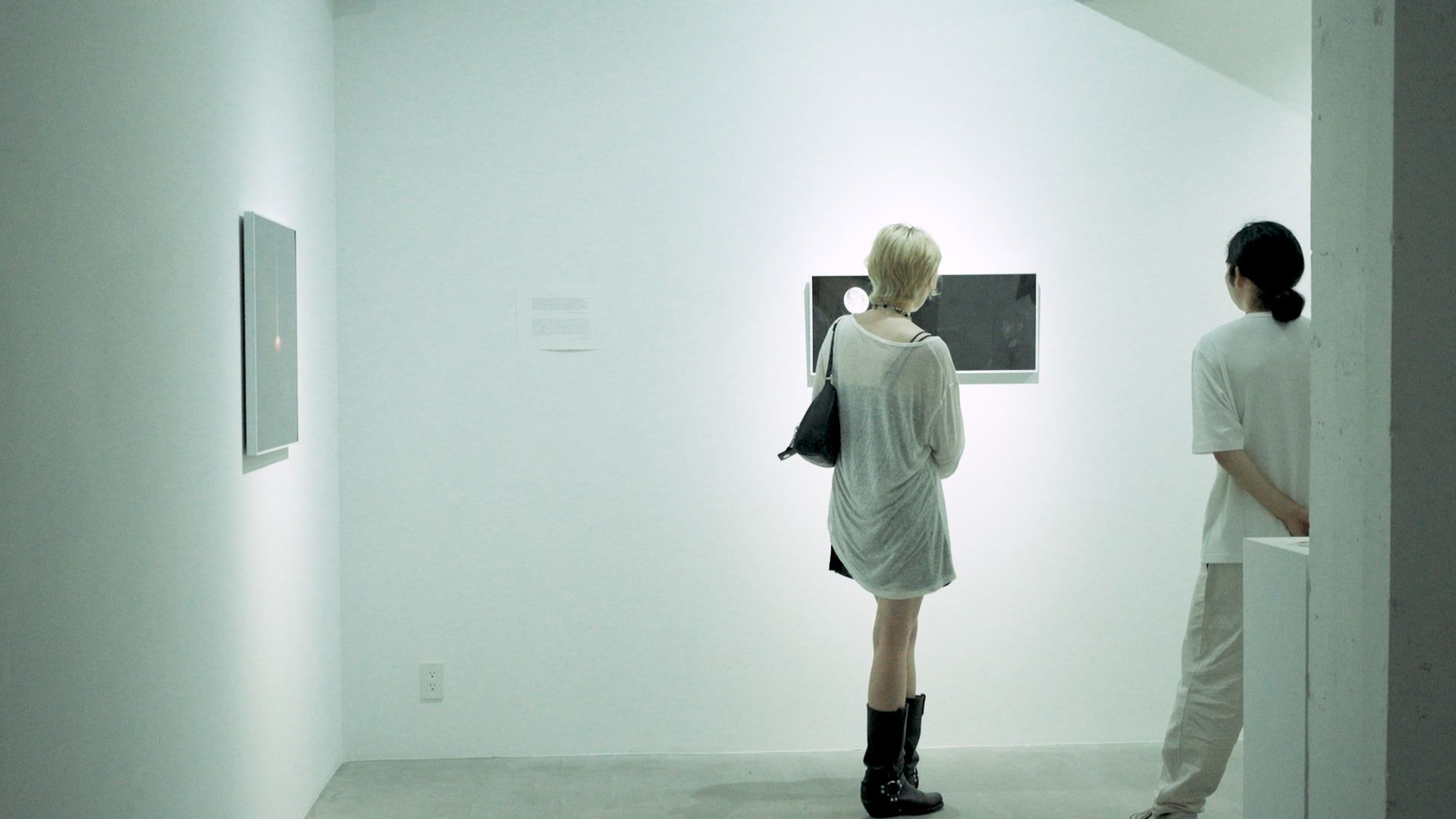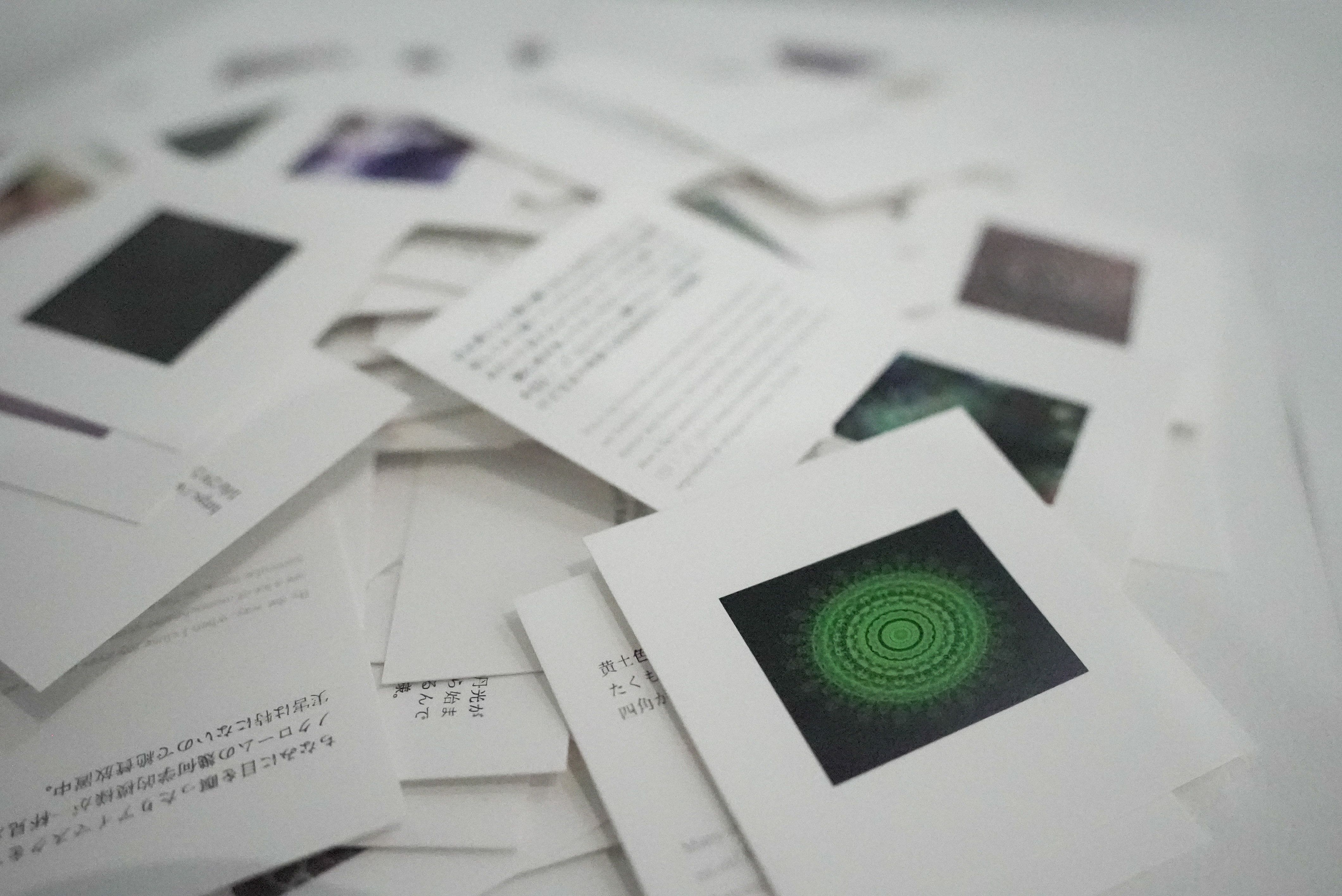Univocity of Mediation: Beautiful Medium
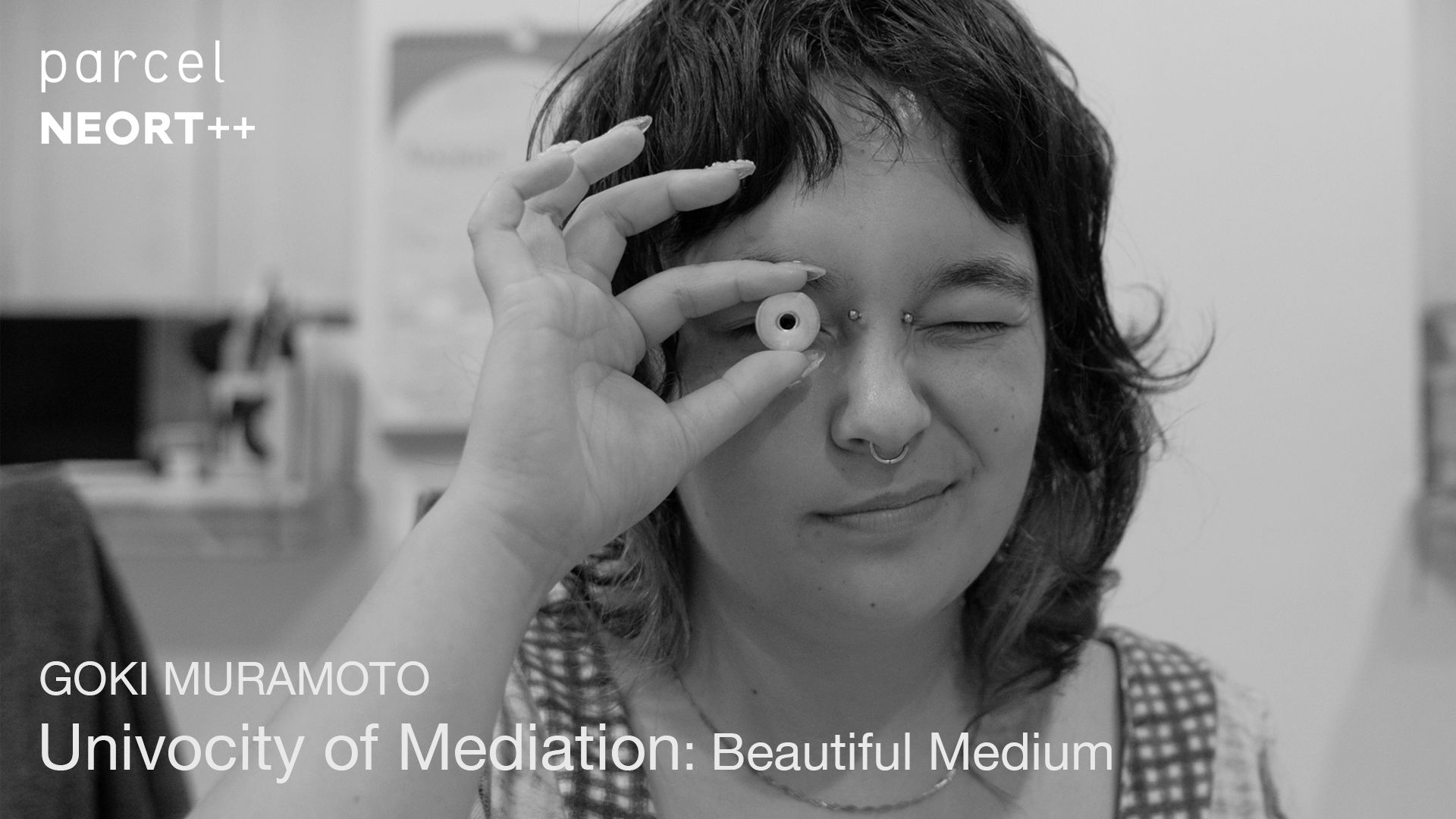
parcel and NEORT++ are pleased to present, Univocity of Mediation: Beautiful Medium, a co-hosted solo exhibition by Tokyo-based artist Goki Muramoto.
Goki Muramoto explores the concept of "mediation"—including perception, communication, and movement—through the act of inventing and sculpting his own unique "medium." This exhibition marks Muramoto’s first solo show to present multiple works simultaneously, showcasing three of his representative series: Imagraph, Lived Montage, and Training Wheels. Together, these works propose the art that Muramoto refers to as "Medium-Art."
Everything moves through something. Listening to another sound—one that what is mediating makes, only by mediating, only while mediating—amidst the loud sound of what is mediated, Marshall McLuhan called the medium the message. Somewhere along the way, my body was also vibrating with this sound, and I realized that it was something I could also make.
My task is to make a beautiful medium. Meine Aufgabe ist es, ein schönes Medium zu schaffen.
This exhibition introduces three media works that each engage vision in distinct ways— Imagraph, a projector that presents video to closed eyes through the eyelids; Lived Montage, a pair of glasses that cinematically shares the field of vision with another viewer seeing the same thing; and Training Wheels, a ring that compels the viewer to look at the world through the lens of a predetermined belief expressed in a single sentence— and propose Medium-Art itself.
Imagraph is an optical apparatus that projects motion pictures onto closed eyes through the eyelids. The viewer lies down on a bed with their eyes closed. A video—preprocessed to shift the skin tone of the participant toward a bluish tint—is projected so that the intended colors, arrangements, and motions are conveyed to the closed eye. At this moment, the eyelids become the medium for precisely what they are supposed to reject. Under the privileged condition of closed eyes, the projected light melds with unconscious visual imagery and shares its textures, blurring the boundary between what is being shown and what is not. In the exhibition space, in addition to the area where Imagraph can be experienced, a curated set of materials and small works titled after-study for Imagraph will be presented—these are not studies for producing the work, but studies conducted afterward in order to understand the work (as media). Named after an apparatus for writing (in) images, this medium interrogates the freedom we possess about the image, both as sender and receiver, through a strange visual experience that evokes the origin of the image itself.
Lived Montage is a goggle-type device designed to reconstruct cinematic montage as a form of perception. The device is equipped with cameras and binocular displays, and projects a cinematic image—created by editing all participants’ original fields of vision in real time—onto each participant’s eyes. The participants observe and act within the space through this vision, and gradually become accustomed to this new perceptual form. In this exhibition, a version will be demonstrated in which the views of all who have looked at the same thing are switched in sync with their heartbeats. As a dynamically transforming collective body and abstract spatial awareness are formed, a fundamental question is posed about the structure of vision: "What sees what?"
Training Wheels is a modest yet evocative series of works composed of perforated brass discs, each paired with a corresponding instruction. The hand-polished discs are accompanied by instructions such as, “See (something), believing that every color is emitted by itself,” or “See (something), believing that everything has touched everything.” While viewing the surrounding scenery through the disc, the viewer is required to follow these instructions. This series, which performs the act of instruction—imagine...—on the level of media itself, embodies most succinctly Muramoto’s artistic stance of treating the medium as the artwork. It invites the viewer to undertake an active effort of seeing, through which existing relationships are dramatically transformed.
The exhibition title Univocity of Mediation: Beautiful Medium refers to the idea that mediation, which renders media as media, is spoken of in the same single sense with regard to everything it addresses. With reference to the concept of the univocity of being, originally posed by John Duns Scotus in the theological discourse concerning the possibility of speaking about God, and later reconstructed by Gilles Deleuze as a plane where difference itself is affirmed, He seeks to explore his artistic language—his "voice"—within the mediological difference between univocal mediation and the various media, and within the difference between being and mediation.
In response to Marshall McLuhan’s famous phrase, “the medium is the message,” Muramoto straightforwardly affirms that “writing this message as a poem” is his most natural form of expression, and he refers to the art of doing so as “Medium-Art.” This exhibition marks the first occasion on which Muramoto, who has been attempting to trace the latent genealogy of this art, presents a radical figure of the “Medium-Artist” through his own body of works and media.
Planning:parcel, NEORT++
Curatorial cooperation: Kaori Tada
Support: Inami-Monnai Laboratory, The University of Tokyo, THE PROJECT TO SUPPORT EMERGING MEDIA ARTS CREATORS
Special Thanks: Masaki Fujihata, Yuiko Fujita, Nae Morita, Daisuke Harashima, Katsuhiko Mizuno, Minoru Hatanaka, Masahiko Inami, Kai Fukubayashi, Karin Suwazono
Reservation
Artist
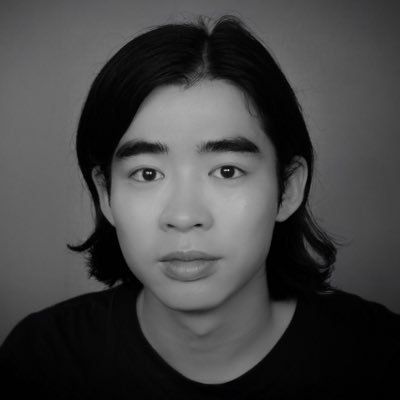
村本 剛毅|Goki Muramoto
Artist. Born in Yamaguchi in 1999, Japan. Lives and works in Tokyo.
He explores “mediation,” encompassing perception, communication, and movement through the process of inventing and sculpting their original”mediation.” Major works include Imagraph, a medium that projects video onto closed eyelids; Lived Montage, a pair of glasses that allows us to share our vision when we share the object of our consciousness; and Media of Langue, a dictionary-sculpture that depicts a chain of word translations.He defines ‘Medium-Art’ as treating the medium itself—open to content—as the artwork, and explores its theoretical and genealogical dimensions.His work has been exhibited nationally and internationally.
Events
- ended2025.8.1 09:00 _ 2025.8.1 12:00
"Univocity of Mediation: Beautiful Medium" Opening Reception
We will pleased to hold an opening reception for "Univocity of Mediation: Beautiful Medium" solo exhibition by Goki Muramoto. No reservation is necessary and everyone is welcome. maruka 3F, Nihonbashi Bakurocho 2-2-14, Chuo-ku, Tokyo - ended2025.8.8 09:00 _ 2025.8.8 10:30
Ecosophic Medium メディウムの美という抵抗
四方幸子On Site | YouTube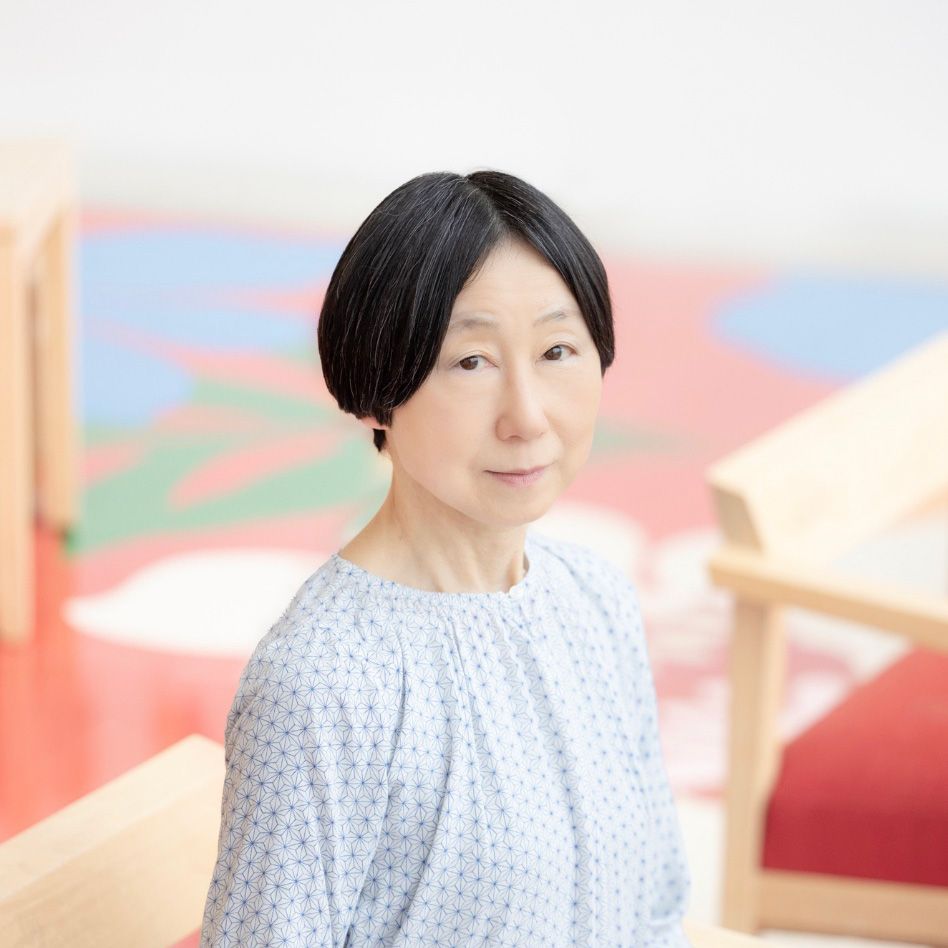
Photo: 小山田邦哉
四方幸子
十和田市現代美術館館長、美術評論家連盟会長、「対話と創造の森」アーティスティックディレクター。多摩美術大学・東京造形大学客員教授、武蔵野美術大学・情報科学芸術大学院大学(IAMAS)・京都芸術大学非常勤講師。「情報フロー」というアプローチから諸領域を横断する活動を展開。1990年代よりキヤノン・アートラボ)、森美術館、NTT ICC(いずれもキュレーター)と並行し、インディペンデントで先進的な展覧会やプロジェクトを多く実現。国内外の審査員を歴任。著書に『エコゾフィック・アート 自然・精神・社会をつなぐアート論』(2023)、共著多数。 http://yukikoshikata.com - ended2025.8.8 10:45 _ 2025.8.8 12:15
The name, Media Art メディウム・アート原論
久保田晃弘 / 畠中実On Site | YouTube
久保田晃弘
多摩美術大学情報デザイン学科メディア芸術コース教授。「ARTSATプロジェクト」の成果で、第66回芸術選奨の文部科学大臣賞(メディア芸術部門)。近著に『遙かなる他者のためのデザインー久保田晃弘の思索と実装』(BNN, 2017)『メディア・アート原論』(フィルムアート社, 畠中実と共編著, 2018)『ニュー・ダーク・エイジ』(NTT出版, 監訳, 2018)『アナログ・アルゴリズム』(BNN, 監訳, 2024)など。
畠中実
1968年生まれ。1996年のNTTインターコミュニケーション・センター[ICC]開館準備より同館に携わり、数多くの展覧会やイヴェントを企画した。主任学芸員、学芸課長をへて2025年3月末で同館を退任。主な展覧会に、「サウンド・アート」(2000年)、「サウンディング・スペース」(2003年)、「サイレント・ダイアローグ」(2007年)、「みえないちから」(2010年)、「坂本龍一 with 高谷史郎|設置音楽2 IS YOUR TIME」(2017年)。そのほか、ダムタイプ、ローリー・アンダーソン、八谷和彦、ジョン・ウッド&ポール・ハリソンらの個展などを手掛ける。近年は、「多層世界とリアリティのよりどころ」(2022年)、「坂本龍一トリビュート展 音楽/アート/メディア」(2023年)、「ICCアニュアル2024 とても近い遠さ」(2024年)、「evala 現われる場 消滅する像」(2024年)などがある。ICC以外の展覧会では、「Ennova Art Biennale Vol.1」アーティスト選考委員(中国、2024年)、森美術館「マシン・ラブ:ビデオゲーム、AIと現代アート」アドヴァイザー(2025年)を務める。著書に、『現代アート10講』(共著、田中正之編、武蔵野美術大学出版局、2017年)、『メディア・アート原論』(久保田晃弘との共編著、フィルムアート社、2018年)。 - ended2025.8.17 08:30 _ 2025.8.17 10:00
Medium; Artwork 媒体; 作品
加治屋健司On Site | YouTube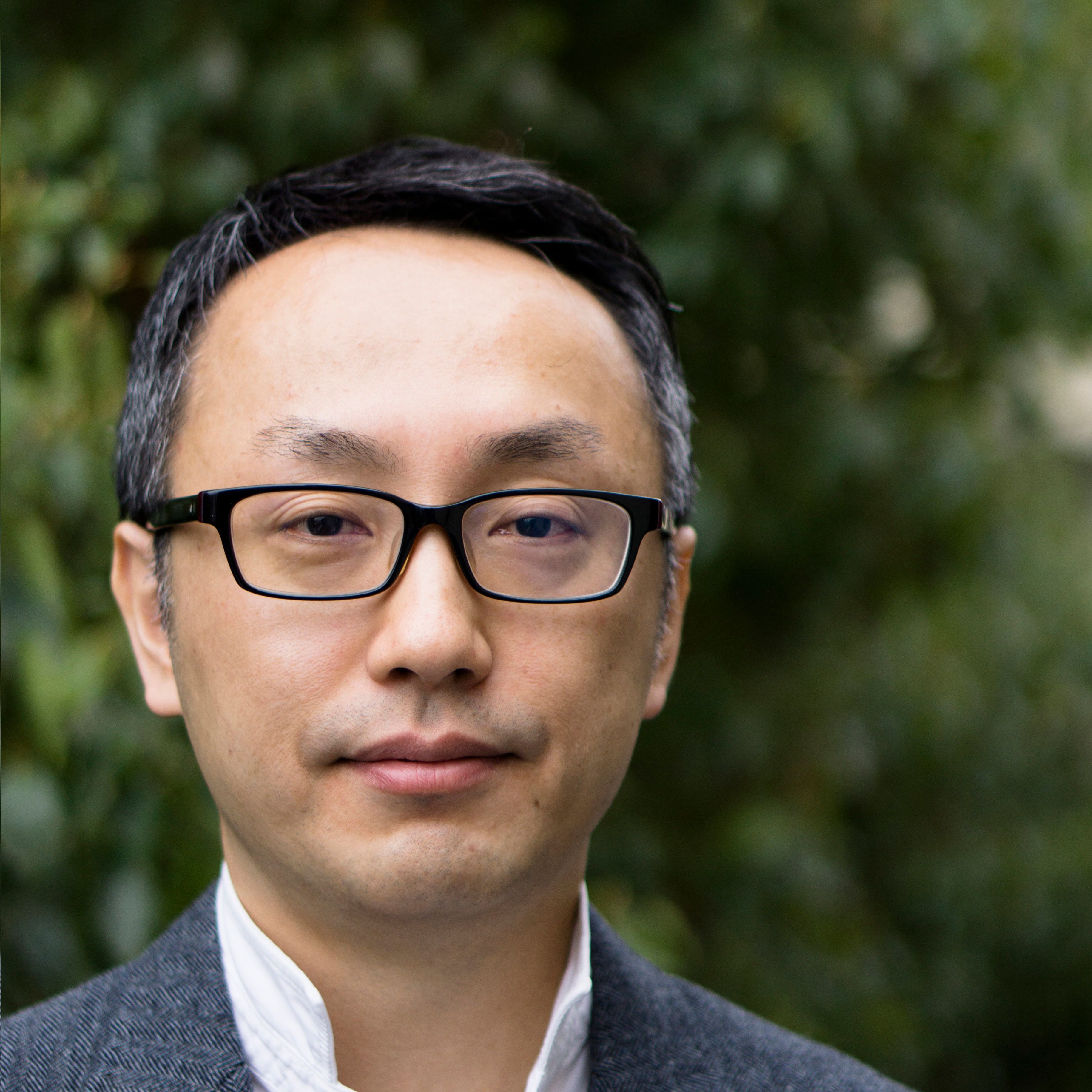
加治屋健司
1971年生まれ。東京大学大学院総合文化研究科 教授、東京大学芸術創造連携研究機構 機構長。表象文化論・現代美術史。 著書に『絵画の解放 カラーフィールド絵画と20世紀アメリカ文化』(東京大学出版会、2023年)、編著に『宇佐美圭司 よみがえる画家』(東京大学出版会、2021年)、共編著に Shaping the History of Art in Southeast Asia, Art Studies, no. 3 (Tokyo: Japan Foundation Asia Center, 2017)、From Postwar to Postmodern, Art in Japan 1945-1989: Primary Documents (New York: Museum of Modern Art, 2012)、『中原佑介美術批評選集』全12巻(現代企画室+BankART出版、2011―2025年)など。 - ended2025.8.17 10:15 _ 2025.8.17 11:45
Voice of Medium Art メディウムアートの声
畠中実On Site | YouTube
畠中実
1968年生まれ。1996年のNTTインターコミュニケーション・センター[ICC]開館準備より同館に携わり、数多くの展覧会やイヴェントを企画した。主任学芸員、学芸課長をへて2025年3月末で同館を退任。主な展覧会に、「サウンド・アート」(2000年)、「サウンディング・スペース」(2003年)、「サイレント・ダイアローグ」(2007年)、「みえないちから」(2010年)、「坂本龍一 with 高谷史郎|設置音楽2 IS YOUR TIME」(2017年)。そのほか、ダムタイプ、ローリー・アンダーソン、八谷和彦、ジョン・ウッド&ポール・ハリソンらの個展などを手掛ける。近年は、「多層世界とリアリティのよりどころ」(2022年)、「坂本龍一トリビュート展 音楽/アート/メディア」(2023年)、「ICCアニュアル2024 とても近い遠さ」(2024年)、「evala 現われる場 消滅する像」(2024年)などがある。ICC以外の展覧会では、「Ennova Art Biennale Vol.1」アーティスト選考委員(中国、2024年)、森美術館「マシン・ラブ:ビデオゲーム、AIと現代アート」アドヴァイザー(2025年)を務める。著書に、『現代アート10講』(共著、田中正之編、武蔵野美術大学出版局、2017年)、『メディア・アート原論』(久保田晃弘との共編著、フィルムアート社、2018年)。
